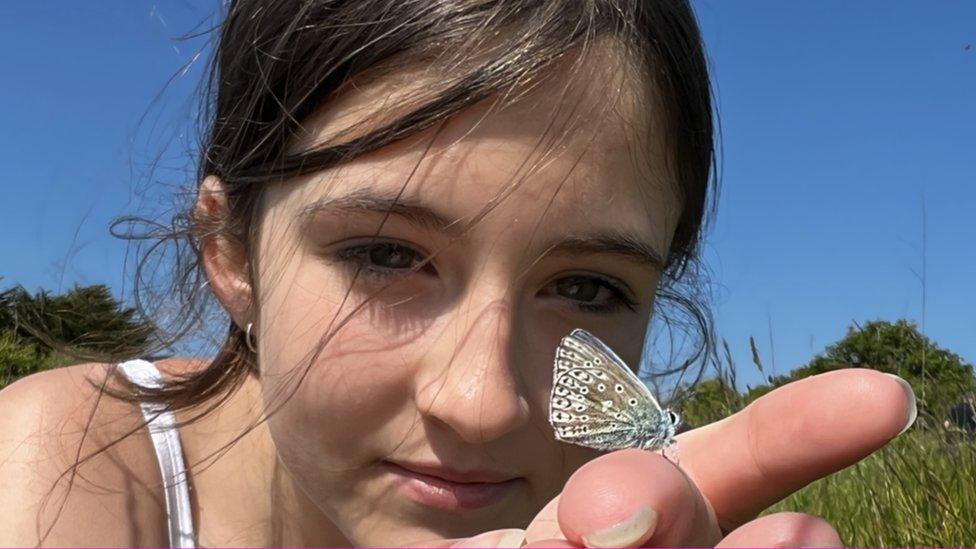Leeds: Rare butterfly collection goes on display at museum
- Published
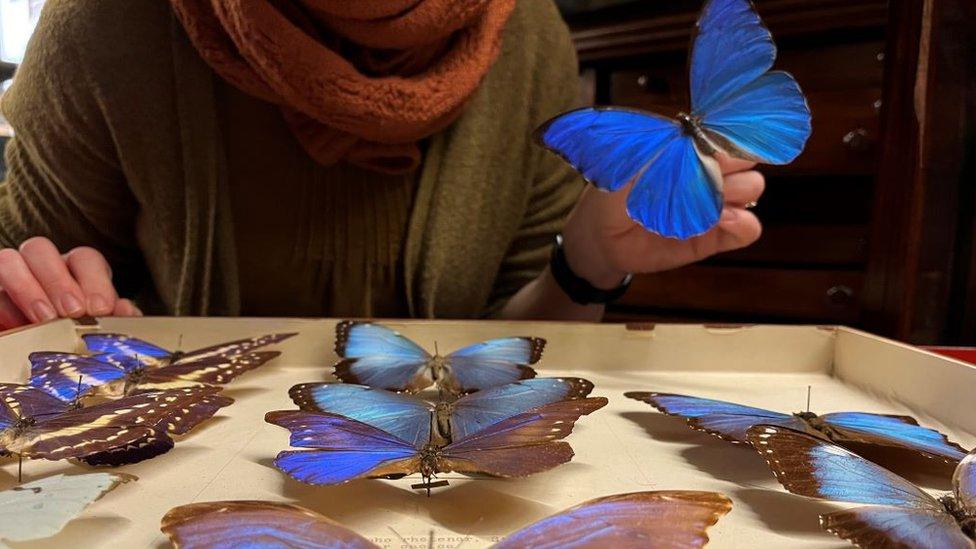
The blue morpho species is among the largest butterfly in the world
A precious collection of rare butterflies - some more than a century old - is being opened up to visitors in a behind-the-scenes look at a museum.
Among the hundreds of featured species is the blue morpho, one of the world's largest butterflies, with a wingspan of between five and eight inches.
Found in central and South America, its vivid colour comes from the light reflected off tiny scales on its wings.
The collection has been conserved by experts at Leeds Discovery Centre.
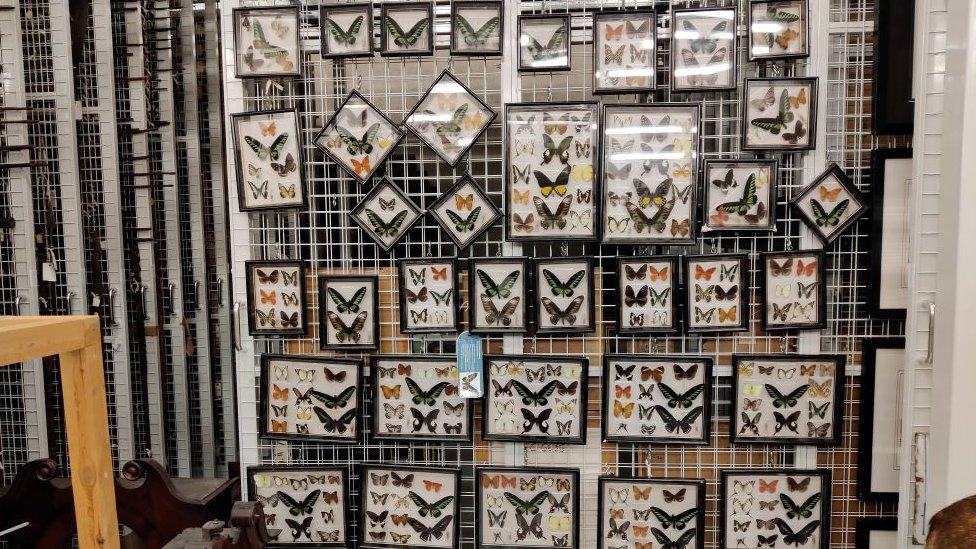
The collection in Leeds features hundreds of butterflies and moths
Clare Brown, Leeds Museums and Galleries' curator of natural sciences, said the blue morpho was one of the "most beautiful butterflies" in the collection.
"These butterflies live in the Amazon rainforest and airline pilots have apparently said that sometimes, if you look over the top of the Amazon, it glitters and shimmers because of all the blue morphos."
Other examples in the collection include a number of Rajah Brooke's birdwings, an electric green and black butterfly.
It also features Sloane's urania, an extinct species of moth believed to have been wiped out in the late 1890s due to habitat loss in Jamaica.
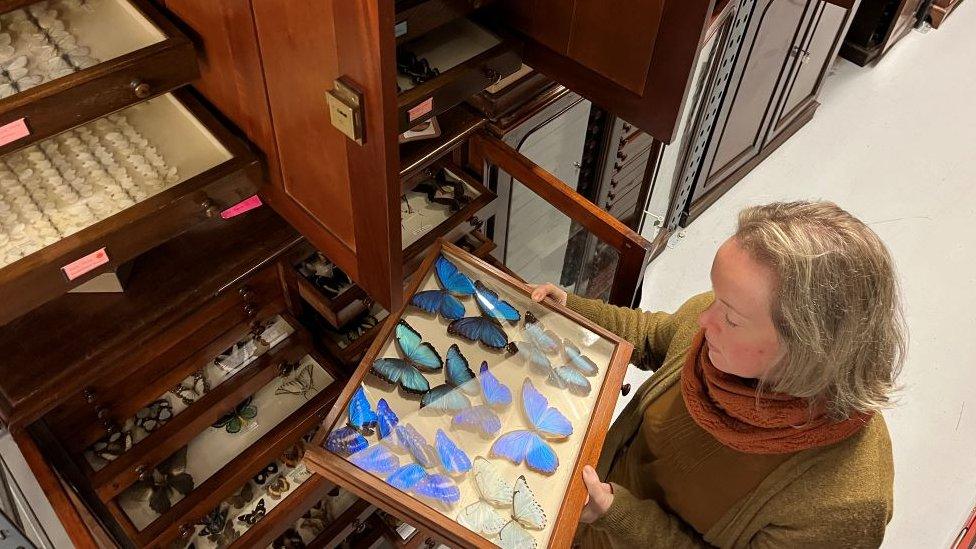
Visitors will be able to get a glimpse of the vast collection, which is usually stored away in the dark for safekeeping
Ms Brown said collecting specimens of animals and insects became a popular pursuit for western explorers and scientists from around the 17th Century.
Wealthy collectors would pay for specimens brought back from expeditions, she said.
"Seeing these unique, incredible colours and shapes for the first time in the wild must have been a genuinely unforgettable and captivating experience," she said.
"Sadly, the fact that many of the species have since become endangered or even extinct demonstrates both their fragility and the importance of learning from collections like ours."
She said the tours were running at the discovery centre over the half term holidays.
"The collection is usually kept under wraps in the dark as we have to be very careful with it," she added.
"People now have the chance to see some very exotic species and of sizes that they've never seen before."

Follow BBC Yorkshire on Facebook, external, X (formerly Twitter), external and Instagram, external. Send your story ideas to yorkslincs.news@bbc.co.uk, external.
Related topics
- Published18 January 2024
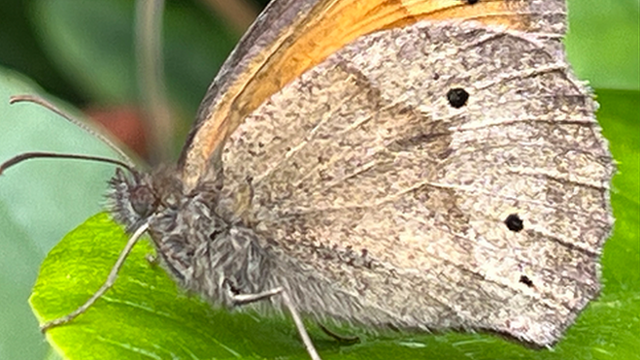
- Published30 December 2023
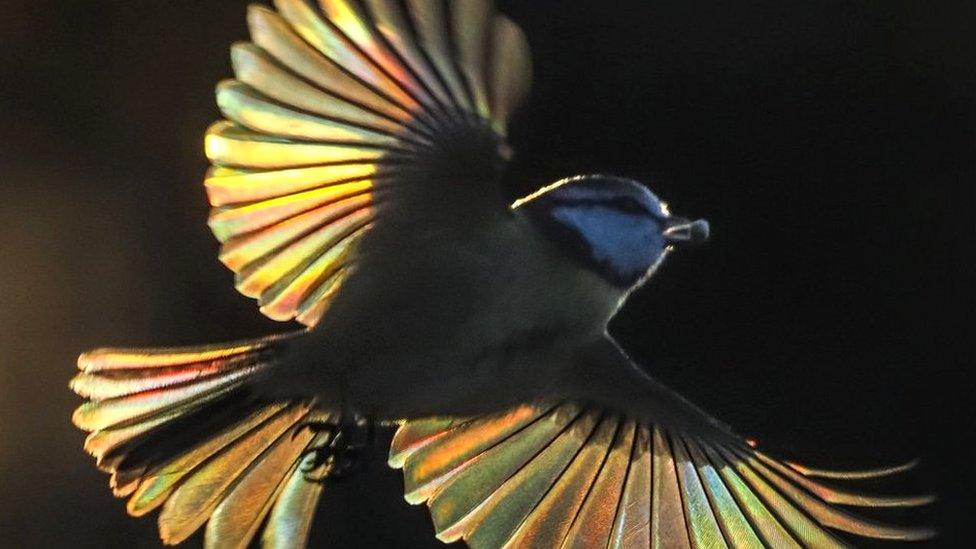
- Published15 September 2023
